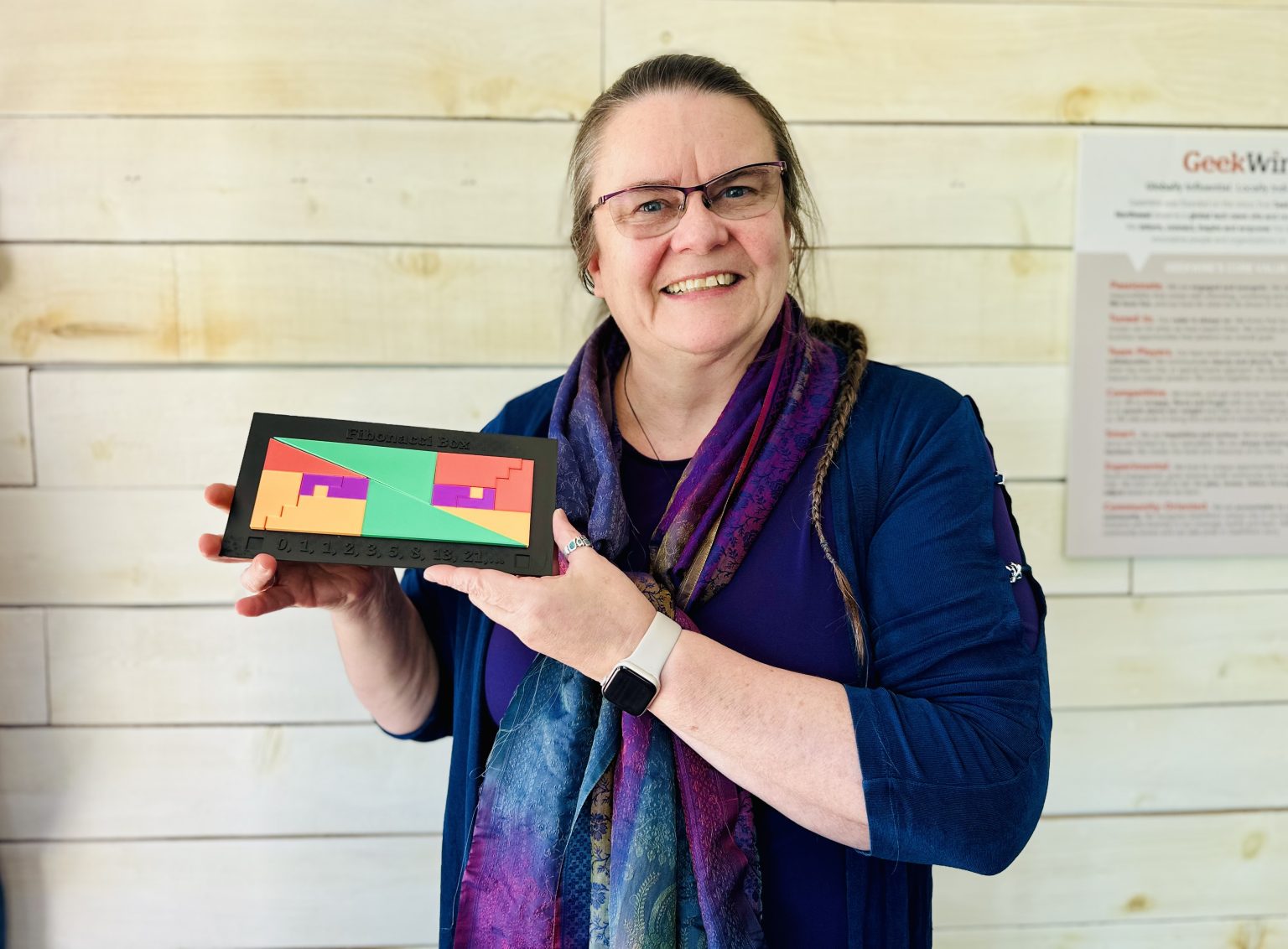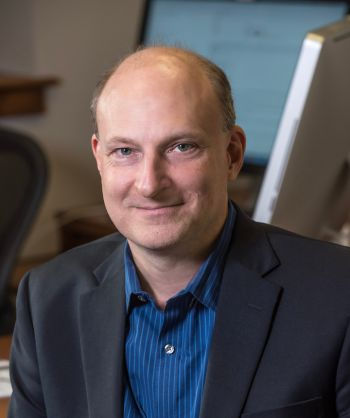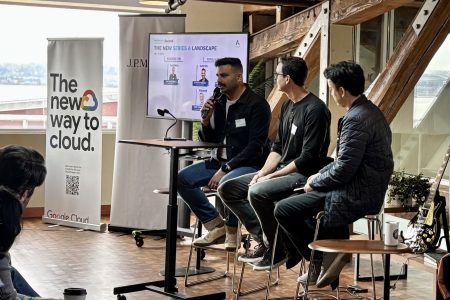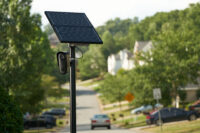Jenny Quinn’s Vision for Making Math Universal and Accessible
Jenny Quinn, the executive director of the Seattle Universal Math Museum (SUMM), carries math with her everywhere she goes—quite literally. With bright 3D-printed shapes that connect into perfect rectangles tucked in her backpack, Quinn transforms into both educator and enchanter as she demonstrates the beauty of mathematical concepts like the Fibonacci sequence. Her eyes light up and her hands move animatedly, revealing a genuine passion that’s impossible to miss. As a former president of the Mathematical Association of America and a mathematics professor at the University of Washington, Tacoma, Quinn brings impressive credentials to her role at SUMM, which she joined in June 2024. She describes this position as “the job I have trained my whole life for,” allowing her to combine her mathematical expertise with her desire to make math accessible to everyone, regardless of their background or previous experiences with the subject.
Quinn’s vision of mathematics extends far beyond calculations and formulas. “Math is everywhere,” she enthusiastically explains, seeing it woven through music, art, architecture, and nature itself. “It’s not just balancing your check book, and it’s not just arithmetic or algebra,” she tells GeekWire. “It’s creating beautiful buildings. It’s music theory.” This holistic approach drives SUMM’s mission to make mathematics engaging and relevant to people of all ages. Quinn understands that early positive experiences with math can be undermined by negative attitudes at home, which is why SUMM focuses on family engagement. “If I get a five-year-old excited to play with puzzles and solve problems—if they go home and there’s a negative vibe toward math in their home, all that positivity can be taken away again,” she notes. “So you need to bring the whole family along.” This inclusive philosophy has helped SUMM reach over 18,000 people last year through diverse programs ranging from “Pints and Proofs” in Ballard to pop-ups at farmers markets, math-and-art exhibitions, and school clubs.
Currently, SUMM operates without a permanent physical location, instead functioning as a mobile museum that brings mathematics directly to the community. With six full-time staff and twelve part-time educators, the organization manages more than 400 events annually—averaging more than one event every day. Quinn explains that their current office in South Seattle serves as “a staging space” where they prepare materials, but it’s not an exhibit space. Instead, SUMM brings its interactive exhibits to schools, farmers’ markets, community centers, and even pubs. This approach aligns with the museum’s core mission of “empowering math learners” through “hands-on, interactive, creative exhibits.” However, Quinn dreams of establishing a permanent 5,000-square-foot museum in Seattle, featuring Instagram-worthy anchor exhibits and regularly changing interactive activities. Despite acknowledging the financial challenges that museums in Seattle face, she remains optimistic about this vision, aiming first to establish “a museum within a museum in less than a year” as a stepping stone toward an independent facility.
Quinn is deeply concerned about the common refrain she hears from people who say they couldn’t pursue careers as doctors, engineers, or scientists because they “couldn’t get past” certain math classes. “People say, well, I’m not a math person,” she notes. “And we have to change that culture. We have to have people understand that everyone is a math person.” She likens mathematical ability to playing a musical instrument or a sport—skills that improve with practice rather than innate talent. “You’re not good at it when you start. You don’t have to be naturally talented, but you can develop the facility with persistence as long as we make it worthwhile to you.” For Quinn, the implications extend far beyond individual success; she envisions “a world where we have people who can solve our problems who are not afraid to use data, who think clearly,” skills that she believes are developed through mathematics. This societal benefit is at the heart of what a math museum can offer—making critical thinking and creativity accessible to everyone.
In an era increasingly dominated by artificial intelligence, Quinn pushes back against the notion that AI renders mathematics education obsolete. “Math is so much more than getting an answer,” she emphasizes, pointing out that while “AI is going to get you an answer,” it also “makes stuff up.” The structure of AI-generated content may appear convincing, but Quinn warns about its reliability. She argues that mathematical education provides the critical thinking skills necessary to evaluate AI outputs and detect “hallucinations.” Beyond accuracy concerns, Quinn raises ethical issues about AI, particularly regarding copyright infringement and plagiarism. She observes the irony in teaching students about plagiarism while allowing AI models to “scrape the entire internet with no regard for copyright infringement…and then synthesize something, and we don’t know if it’s plagiarizing or not.” Quinn compares overreliance on machine-generated content to making a “photocopy again and again,” with quality deteriorating over time. In contrast, rigorous mathematical training develops creative problem-solving skills that AI cannot replicate.
Looking to the future, Quinn’s ambitions extend beyond Seattle. She points to the Museum of Math in New York as inspiration but notes that “90% of the nation can’t afford to go visit it.” Her goal is to make mathematics accessible to people throughout the Pacific Northwest, ideally in a location easily reached by public transportation. “If they can’t come visit it, we want to be able to bring materials to them,” she says. “We want to meet people where they are.” Ultimately, Quinn envisions a nationwide network of math museums, suggesting that “every major metropolitan region needs one” and that these institutions should “support each other and share materials so that we’re not all doing it in isolation.” She observes that while most large cities have science or children’s museums, “none of them do enough service to math.” Through SUMM’s work and her broader vision for mathematical education, Quinn hopes to transform public perception of mathematics from an intimidating obstacle to an accessible, creative, and joyful pursuit that enriches both individual lives and society as a whole.














